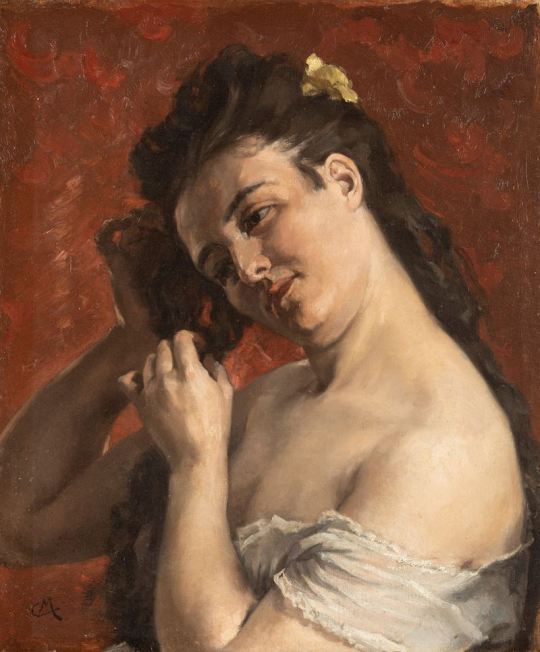#cesare Maccari
Text

Cesare Maccari (Italian, 1840–1919) - The fortune teller
131 notes
·
View notes
Text
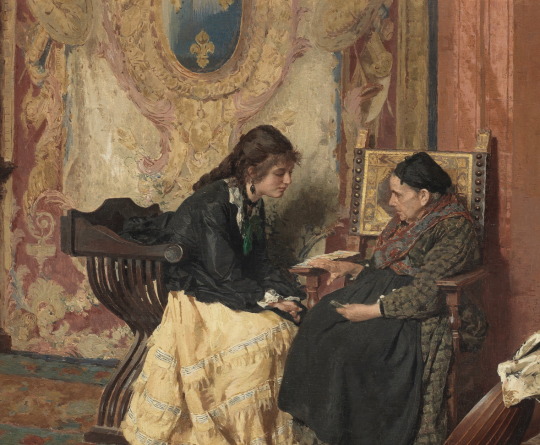
The fortune teller by Cesare Maccari (detail)
25 notes
·
View notes
Text
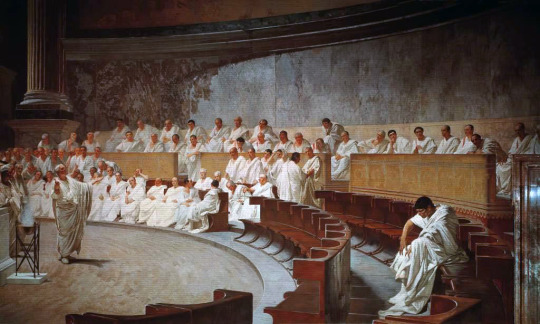
Cicerone Denuncia Catilina (Cicero Denounces Catiline)
#cesare maccari#italian art#catilinarian conspiracy#marcus tullius cicero#lucius sergius catilina#roman history#rome#romans#spqr#historically inaccurate painting#am i turning into one of those people#curmudgeon
3 notes
·
View notes
Text
Tik Tok - Ides of March Edition (A Julius Caesar (the play) fanvid and song parody)
youtube
A music video for the upcoming Ides of March!
Based on the song Tik Tok by Kesha with new lyrics and vocals by me. Audio editing by my partner.
(I know it's not the ides yet, but people play Christmas music for a month leading up to Christmas, so.)
Lyrics and artworks in the video under the cut (artist birth and death years where I could not find the year of creation).
Lyrics:
Wake up in the morning feeling hyped up from battle
No I haven't got a crown, but it ain't worth the hassle
Before I leave hear a warning from the cheering mass
I don't care, he's just a dreamer, so I leave him and pass
I'm talkin: just took out my foe, foe,
Got parades wherever I go, go
Bout time I got that throne, throne. [gasp I mean--]
On to the Senate on the Ides, Ides,
Hear the pleading of my wife, wife,
That's when it gets a little bit tricky…
[Chorus:]
Can't stop; you know the gods already made this story up
Three times, I've declined, and it's nearly the Ides
Tick Tock, on the clock, but the Senate don't stop, no
Whoa-oh oh oh, Whoa-oh oh oh
[Repeat Chorus]
Ain't got a care in the world, 'cause her dream's just a dream
And the omens that she's seen could be 'bout anything
Now the Senate's lining up, 'cause they heard I got swagger
Beggin' mercy for Publius--Wait. Is that a dagger?!
I'm talkin bout--errybody got a knife, knife
Even Brutus wants my life, life
Should'a listened to my wife, wife.
Now, now does Caesar lie so low, low,
But the people will still know, know
Of the fortune he brought Rome, Rome…
Fortune he brought
[Chorus x2]
Romans, We stabbed him but, you have to know
This was for Rome, not for power
I loved him but he had to go, a threat he posed to our freedom
Brutus, you stabbed me but, you'll see me soon
upon your doom at Philippi
You'll see me soon upon your doom, upon your doom
But the party don't start 'til Marc walks in.
[Chorus x2]
Artworks:
Brutus and Caesar's Ghost:
Brutus and the Ghost of Julius Caesar, Edwin Austin Abbey (1852–1911)
Brutus Disturbed By The Ghost Of Caesar, From Shakespeare's Julius Caesar, Act IV, Scene III, Henry Tresham (c.1751 – 17 June 1814)
Caesar's Death:
"Julius Caesar, Act III, Scene 2, the Murder Scene", George Clint (1822)
Death of Caesar, March 15, 44 BC Painting by Vincenzo Camuccini (1798)
The Assassination of Julius Caesar, William Holmes Sullivan (1888)
The Murder of Caesar, Karl von Piloty (1865)
The Death of Julius Caesar, George Esten Cooke (1837)
The Death of Caesar, by Jean-Léon Gérôme, 1867
Assassination of Julius Caesar, Spanish School, (19th century)
The Assassination of Caesar, Heinrich Füger, 1818
The death of Caesar, Victor Honoré Janssens (1658-1736)
Woodcut manuscript, Johannes Zainer, c. 1474
Marc Antony:
Marc Antony Reading the Will of Caesar, William Hilton (1786-1839)
Marc Antony's Oration, William Holmes Sullivan (1836-1908)
Declining the throne:
Caesar refuses the Diadem, 1894
Antoine offre le diademe a cesar, 1810 Copper engraving
Roman Senate:
Cicero Denounces Catiline (1888), Cesare Maccari
Caesar going to the Senate on the Ides of March, Abel de Pujol (1785-1861)
The Roman Forum by Hodgkin (1800-1860)
Soothsayer:
Beware the Ides of March Soothsayer warning Julius Caesar of the Ides of March, 1858 Wood engraving
Caesar and the Soothsayer, Illustrator Unknown, Published 1880.
Caesar's Wife pleads with him:
Cowards die many deaths - Hans Holbein the Younger (1497-1543)
Calpurnia, Caesar's wife admonishing Caesar, Abel de Pujol (1785-1861)
Triumphs of Caesar:
Julius Caesar, Andrea Mantegna, c. 1490
The Vase Bearers, Andrea Mantegna, c. 1490
Picture Bearers, Andrea Mantegna, c. 1490
Musicians, Andrea Mantegna, c. 1490
Corselet, Andrea Mantegna, c. 1490
A Roman Triumph, Rubens, c. 1630
Vercingetorix Throws Down his Arms at the Feet of Julius Caesar, Lionel Royer (1899)
Caesar Crossing the Rubicon, Adolphe Yvon, 1876
#shakespeare#kesha#ides of march#julius caesar#julius caesar (the shakespeare play)#parody#song parody#Youtube
34 notes
·
View notes
Text
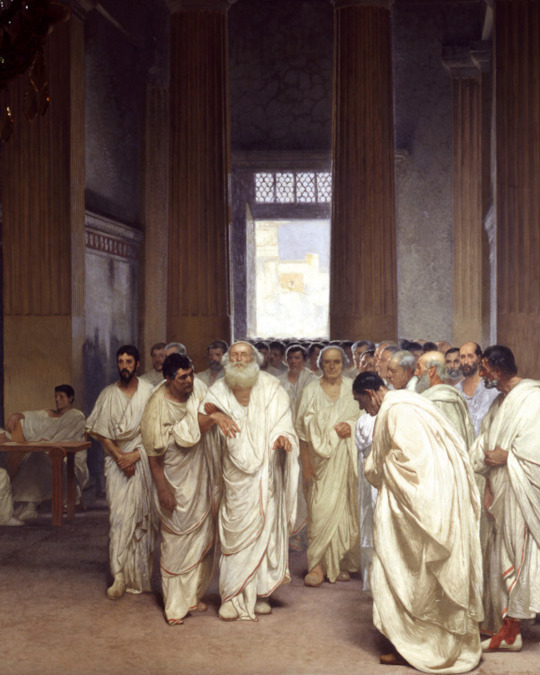
En el 280 a. C., Roma estaba a punto de someterse al rey Pirro. Sin embargo, Apio Claudio, un anciano senador ciego, reprendió a los romanos con tanta dureza que les devolvió la determinación de seguir luchando. Pintura (detalle) de Cesare Maccari.
1 note
·
View note
Text
La battaglia di Pistoia (62 a.C.)
La battaglia di Pistoia (62 a.C.)
… sconfitta e morte di Lucio Sergio Catilina
di Alessandro Ferrini
Particolare dell’affresco di Cesare Maccari raffigurante Catilina (Roma, Palazzo Madama, 1880)
Lucio Sergio Catilina nacque a Roma nel 108 a.C., all’inizio di un secolo tormentato da guerre e lotte civili che segnarono la fine della Repubblica e l’inizio del Principato.
Discendente da una nobile e antica famiglia romana,…

View On WordPress
0 notes
Photo
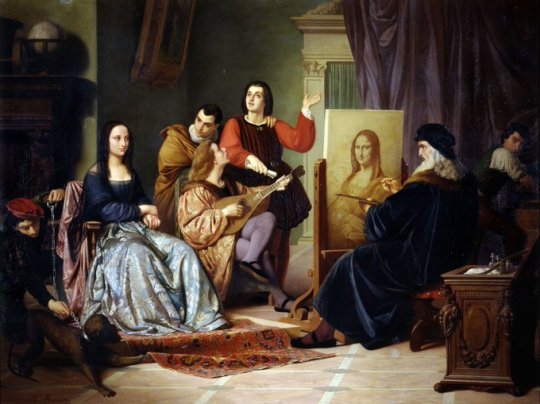
Cesare Maccari: Leonardo pintando a Mona Lisa (1863)
8 notes
·
View notes
Photo
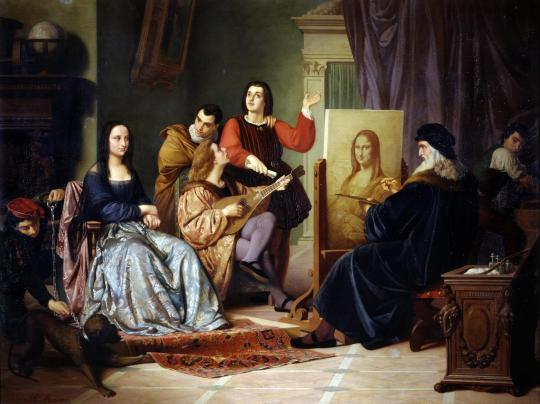
Leonardo da Vinci Painting La Gioconda, Cesare Maccari, 1863 [3294x2465]
37 notes
·
View notes
Photo

I Mori di Venezia (detail) by Cesare Maccari
1 note
·
View note
Photo

Leonardo Painting the Mona Lisa, Cesare Maccari, 1863
#art#art history#Cesare Maccari#historical painting#Renaissance#Renaissance Italy#Leonardo da Vinci#Italian art#19th century art#Museo Cassioli
114 notes
·
View notes
Photo
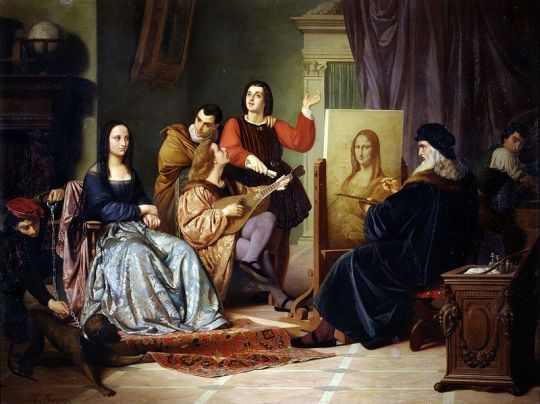
Cesare Maccari (1840-1919) - Leonardo retrata a la Gioconda (1863)
3 notes
·
View notes
Photo

Baccante - Cesare Maccari
3 notes
·
View notes
Photo
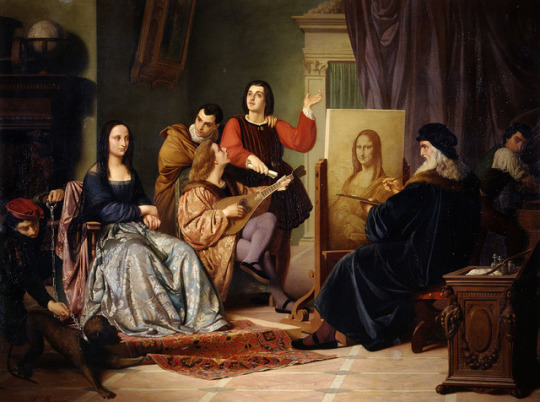
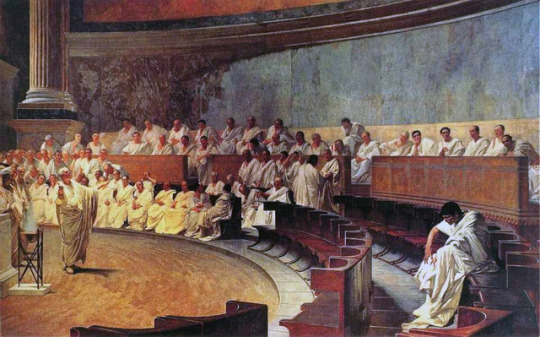
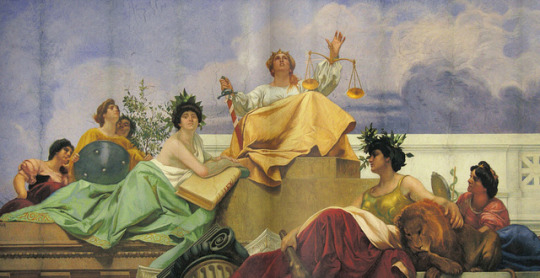
By Alexis Culotta
Cesare Maccari was born 9 May 1840 in Siena. He would grow up to become an award winning painter best known for his classically-inspired compositions.
Studying first at Siena’s Accademia di Belle Arti, Maccabi later continued his training in the Florentine studio of Luigi Mussini. As a testament to Maccari’s innate talent, while working in Florence he received several notable commissions as well as a scholarship to fund a period of study in Rome.
Once Maccari arrived in Rome in the 1860s, he would stay there for the majority of his career. Over the next decade, Maccari’s work was showcased in a number of prestigious venues and he was lauded with substantial commissions. From 1870 to 1873 he worked on a series of seven painted for the Chiesa del Santissimo Sudario dei Piemontesi in Rome, and in 1878 his painting, The Deposition of Pope Silvers by Antonina, wife of Belisarius, was a prize winner of the Turin Exposition that year.
The 1880s and 1890s witnessed Maccari’s work on a fresco cycle for Rome’s Palazzo Madama as well as a cupola cycle for the Basilica di Loreto; upon his return to Rome near the turn of the century, Maccari embarked on an ambitious fresco cycle for the Palazzo di Giustizia. Maccari died in Rome in 1919.
Further Reading:
De Gubernatis, Angelo. Dizionario degli artisti italiani viventi, pittori, scultori e architetti (Florence, 1889).
Leonardo da Vinci Painting the Mona Lisa, 1863.
Cicero Denounces Catiline, 1889. Palazzo Madama, Rome.
Justice with the Balance and the Sword Between Law and Strength, c. 1900. Palazzo di Giustizia, Rome.
#cesare maccari#19th century#siena#rome#fresco#palazzo madama#basilica di loreto#painting#luigig mussini
142 notes
·
View notes
Photo
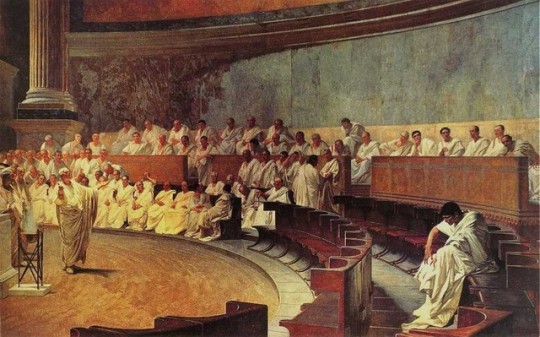
“Cicero Denounces Catiline” by Cesare Maccari
#cicero#cesare maccari#ancient rome#orator#catilinarian conspiracy#conspiracy#catiline#fresco#art#people#tribunal#history#drama#history art#painting#19 century#law#rome#Aesthetic#justice
4 notes
·
View notes
Text
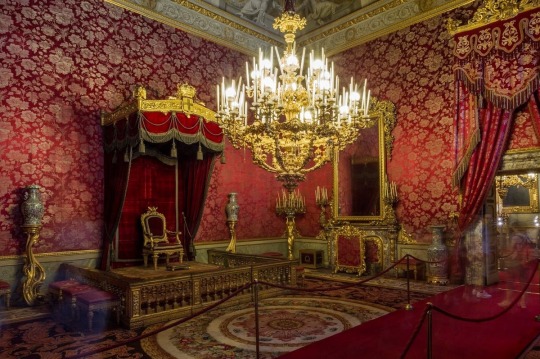
Palazzo Pitti
#Apartamentos Imperiales y Reales#Durante la época de los Mediceos#cuando el ala derecha del primer piso del palacio estaba ocupado por el Gran Príncipe Fernando#la sala del trono se utilizaba para las audiencias oficiales. También se utilizó para colgar algunos de los cuadros de su famosa colección.#aunque con algunos cambios#es como se habría visto en la época de Víctor Emanuel II#cuando Florencia era la capital de Italia (1865-1871). Así lo muestra un conocido fresco de Cesare Maccari#que se puede ver en el Palazzo Pubblico de Siena y está dedicado al Plebiscito del 2 de octubre de 1870#que estableció la anexión de Roma al Reino de Italia y la consiguiente transferencia de la capital de Florencia a Roma.#Toda la atención se concentra en el trono#bajo un baldaquín#un marco real realzado por los grandes espejos de las paredes#para multiplicar las imágenes del rey#así como por el suntuoso conjunto de lampas de seda roja. En el arco del techo están las decoraciones triunfantes de Giuseppe Castagnoli (1#con decoraciones monocromáticas para enmarcar la imagen de Júpiter entronizado. La habitación ha sido realzada aún más por una lámpara dora#Asimismo#en las estancias contiguas se renovaron tapizados y revestimientos bajo Leopoldo II de Habsburgo-Lorena. Este es el mismo período en el que#al igual que los portaantorchas#los espejos gemelos#las tres mesas de pared y los taburetes. La zona del trono se dispuso más tarde#para la llegada del monarca de los Saboya#y volvió a cambiar a partir de 1871#cuando se añadió la balaustrada y la silla de la audiencia con el emblema de los Saboya.
1 note
·
View note
